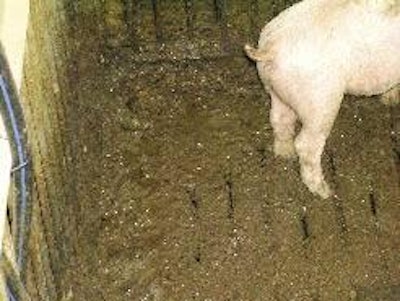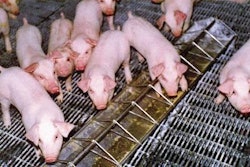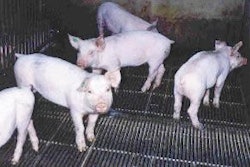
As a previous article (Pig International April 2006) has noted, young pigs respond to the inclusion of dairy products in their feed, especially during the first 1-2 weeks after weaning and this response has been established to be mainly to the lactose fraction. Almost invariably, however, the usefulness of milk-based ingredients is questioned whenever their supply is limited or their prices are high.
The real question at such times revolves around the quantity of lactose that should be present in the diet to support a satisfactory level of performance by weaned pigs. Answers are needed in order to propose practical lactose specifications for piglet diets, but they depend on the nursery results that we would consider to be satisfactory.
Although this may seem obvious, in fact it is regarded quite differently in different parts of the world. Most producers in the USA, for example, strive for maximal growth performance during the period following early weaning at 4-5 kilograms body weight. Cases of diarrhoea (scours) usually are addressed on US units by the use of medication in the feed or the drinking water as well as by management actions to improve the overall health status.
By way of contrast, many European countries see a satisfactory performance as being associated firstly with an absence of digestive upsets and then more generally with good feed intake and growth. The producer in Europe often expects a piglet feed to prevent digestive upsets, regardless of other management and health factors that might trigger such problems.
At this point, a reminder is required that lactose has a laxative effect. It is an effect which becomes more pronounced as its inclusion level increases. On its own this should not necessarily disturb the pig's growth performance, unless of course complicated by an infection due to unhygienic conditions or flawed management. But the underlying message is that high-lactose diets should not be fed for prolonged periods of time to pigs susceptible to pathogenic scours.
On the other hand, pigs raised under superior health conditions can utilise a high-lactose diet without digestive problems. Diets with up to 50% lactose fed over a short period of time (3-5 days) have been shown to support maximal feed intake without the unpleasant sight of secretory diarrhoea or soft faeces. But such high rates of inclusion are best limited to the lactation period (creep feeds) and as special appetisers or top-dress supplements for sick and fall-back pigs.
The effect of lactose level in piglet diets has been investigated in many trials throughout the world, under research and commercial conditions. Results from a recent trial conducted at The Ohio State University in the USA are presented in Figure 1. A review of similar trials conducted from 1993 until the present day reveals a series of general concepts.
Figure 1: Lactose and piglet growth relationship
The first of these is that high dietary concentrations of lactose are most definitely beneficial immediately after weaning. But the inclusion rate can be reduced rapidly afterwards. Also demonstrated by the extensive trial work over the years is that piglets do not benefit greatly from supplemental lactose after they weigh about 10-12 kg.
Although growth performance in lactose trials has been variable due to differences in basal diet composition, environment, health conditions and feed intake, most experiments report quite similar lactose requirements for nursery pigs. Based on these data, practical recommendations for dietary lactose specifications are presented in Table 1.
Table 1: Recommended lactose specifications in diets for piglets
The levels of lactose recommended in the Table assume that the pigs are raised in above-average conditions and so are unlikely to be susceptible to general pathogenic infections. In below-average conditions, it is not uncommon for a post-weaning diet to contain as little as 5-10% lactose. Even then its feeding period rarely exceeds one week. Such a regimen usually is accompanied by restricted feeding and/or high-fibre diets supplemented with organic acids (5-10kg per metric ton), most often in the absence of antimicrobial growth promoters such as antibiotics, zinc oxide or copper sulphate.
On a final note, it appears that the optimal dietary lactose concentration is affected by feed intake, especially during the first week post-weaning. A study conducted in 1995 in the USA indicated that adding animal plasma may lower lactose requirements, because of the plasma's promotion of a higher intake of feed by the newly weaned pig. In this study, pigs fed diets with 6.75% plasma protein required 15% added lactose for maximal growth performance during the first week after weaning. But when animal plasma was replaced by extruded soy protein concentrate, growth performance peaked between 30-45% dietary lactose.
Keep in mind that a higher feed intake is closely related to a more rapid maturation of the digestive system. Therefore, any diet that promotes the development of early appetite may require less supplementation with lactose, for the level of nursery performance that you consider to be satisfactory.

















